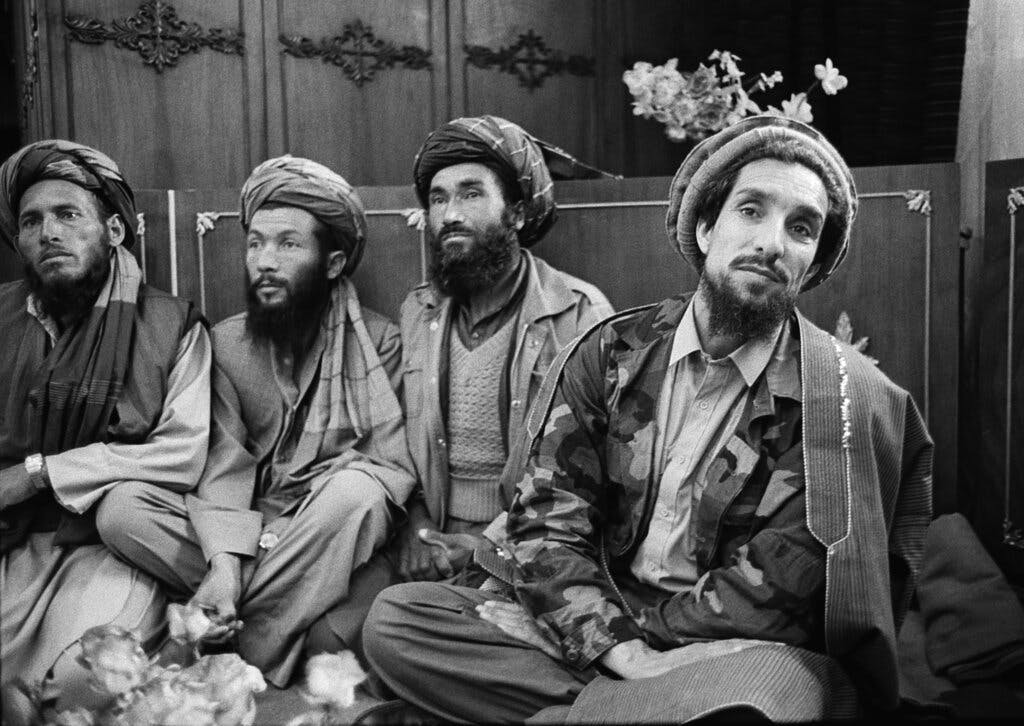On Anniversary of American Withdrawal From Afghanistan, a Doughty Resistance Is Mounted by Heirs of the ‘Lion of Panjshir’
The Biden administration shows no willingness to help, but the National Resistance Front carries on.

On the one-year anniversary of America’s withdrawal from Afghanistan, an anti-Taliban insurgency group, the National Resistance Front, is claiming substantial victories in the northeast against the hardline Islamist group and waging a parallel offensive for international support.
“As the Taliban were celebrating their first anniversary of the fall of Kabul, we launched a major operation, killing more than 80 Taliban terrorists and taking 41 Taliban captive,” the National Resistance Front’s head of foreign relations, Ali Nazary, tells the Sun. “We urge any country that perceives global jihadism and terrorism as a threat, as an enemy, to support us.”
Mr. Nazary says that the NRF has expanded its troop levels and now controls 60 percent of the territory in Panjshir Province, just north of Kabul. He points to the appointment this month of a notorious Taliban commander, Abdul Qayyum Zakir — who was detained in Guantanamo in the early 2000s — to lead forces against the NRF in Panjshir as a clear indication of the threat the resistance group is posing.
Led by Ahmad Massoud, son of Ahmad Shah Massoud, who for his resistance to the Soviet invasion of Afghanistan in the 1980s earned the sobriquet “Lion of Panjshir,” the National Resistance Front was founded last August to combat Taliban control of the country. Composed primarily of former Afghan army and special forces members, the NRF is now operating in 12 provinces and actively fighting in six, according to Mr. Nazary.
The group’s major bases are in Panjshir Province, and the territory it controls is in the Hindu Kush region in the northeast of the country. Comprising mainly Tajiks, the north has historically been a pocket of resistance to the Taliban. Panjshir Province was a stronghold of the Northern Alliance, Ahmad Shah Massoud’s coalition of forces that fought the Taliban in the 1990s.
Shah Massoud was assassinated two days before the 9/11 attacks. His son, Ahmad Massoud, now carries the resistance mantle.
“The Massouds have pretty deep roots in these areas, and I think even the Taliban — they may not say it publicly — but I think they even quietly acknowledge that it will be very difficult to have an enduring peace in the area so long as Ahmad Massoud has an insurgency,” an Afghanistan researcher at a think tank on defense and foreign affairs, the Institute of the Study of War, Peter Mills, tells the Sun.
While Mr. Mills says he can corroborate recent NRF victories from videos posted and reports from Afghan journalists, he cautions that these successes are localized and may be short-lived, and that the NRF is not yet strong enough to threaten Taliban rule nationwide. “The Taliban have sufficient military strength,” he says. “I do think it’s going to be very difficult for the NRF to hold onto substantial amounts of territory in the short run.”
“That said, we have seen some reports of lower- to mid-level Taliban commanders, typically local Tajiks, who have defected from the Taliban and joined the National Resistance Front,” Mr. Mills says. He stresses that if this trend of attrition continues it could turn the tide for the NRF in the long run.
Mr. Mills says the NRF currently has between 3,000 and 5,000 fighters, while the Taliban claims more than 100,000. Mr. Nazary says that Taliban number is inflated, though he concedes Taliban troops far outnumber those of the NRF.
“The enemy has better capabilities and resources than us, but we are able to sustain ourselves because of motivation, morale, and legitimacy,” Mr. Nazary says.
The NRF’s stated end goal is a decentralized, moderate democratic Islamic republic that respects women’s rights and ethnic differences throughout the country.
Mr. Nazary and the NRF are launching their campaign for Western and regional support by framing the conflict as part of a larger international struggle against terrorism. “Terrorism today in Afghanistan is much stronger than it was in 2001, before 9/11,” Mr. Nazary says.
He points to the $7 billion in American weapons and equipment now in Taliban hands. He also says the Taliban and terrorist groups are promulgating a narrative of victory over America and NATO in recruitment efforts. In congressional briefings last October, American military officials estimated the Taliban would need between six and 12 months to develop the capability to conduct an attack abroad.
“The Taliban relationship with Al Qaeda continues. It’s an enduring relationship. It’s a strong relationship,” Mr. Mills says. He notes that Al Qaeda’s Ayman al-Zawahiri was staying in a house owned by the interior minister of the Taliban when he was killed earlier this month by an American drone strike.
A March 2022 United States government assessment also recognized the terrorism threat from ISIS-K: “As the economic situation and humanitarian crisis in Afghanistan worsen, with food security continuing to deteriorate, vulnerable populations will potentially become increasingly susceptible to ISIS-K recruitment.”
American support for an insurgency group like the NRF is unlikely — there is little appetite among the American public or the Biden administration for continued involvement in Afghanistan beyond humanitarian aid. There is also a history of support for insurgent groups backfiring. The Biden administration hailed the drone strike that killed al-Zawahiri as proof that the war against terrorism can be waged successfully without any troops on the ground.
Mr. Nazary is making his case anyway. The NRF is not engaged in “a civil war, but a continuation of the global war on terror,” Mr. Nazary says. “Without support, we will continue resisting, we will continue fighting against terrorism, but it will take a much longer time.”

